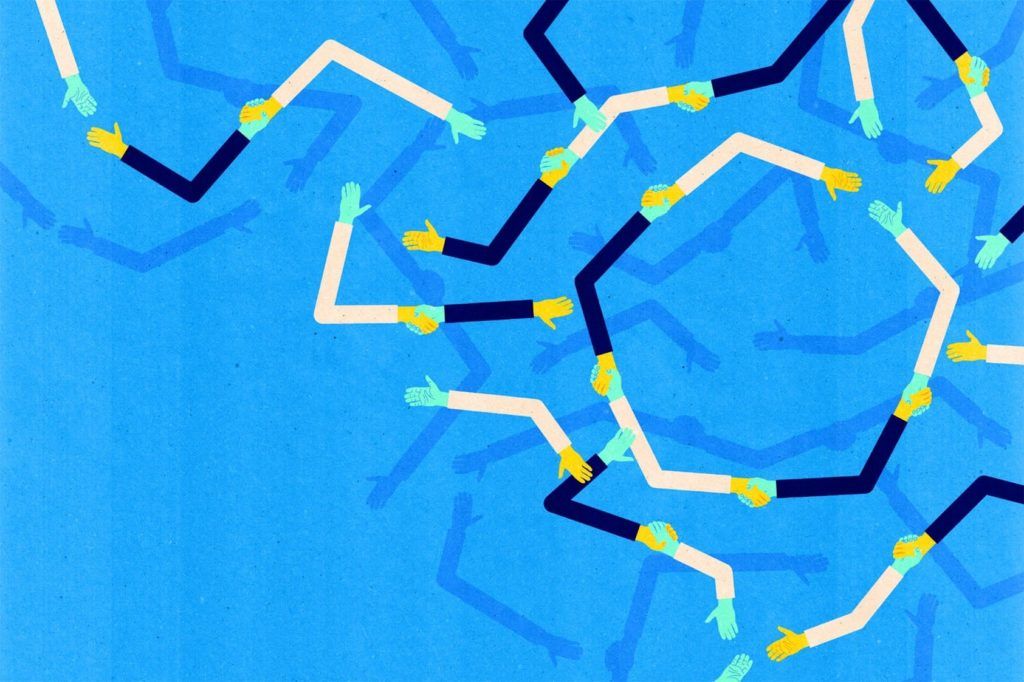

The connection between two nodes represents a pair of entangled qubits shared by these two nodes. Relying on quantum repeaters in the network, Entanglement Swapping is able to overcome the exponential fading of quantum pairs over distance in the channel, allowing any two end nodes in the network to be connected. Entanglement Swapping is the cornerstone of large-scale quantum networks. The properties of quantum communication itself, such as Entanglement Swapping, also make it have better transmission performance than regular quantum networks under complex networks. Quantum networks are no longer limited to regular network shapes but are developing toward large-scale, long-range, multi-user complex networks, which is determined by the future research and application prospects of quantum networks.

With the continuous research on quantum communication, the structure and scale of quantum networks are changing dramatically. In addition, the ConPT method is used to reduce the percolation threshold even further, thus obtaining a better network structure and reducing the resources required. Any node can perform entanglement swapping on only part of the connected edges, which can reduce the influence of each node in the network during entanglement swapping. In this paper, we investigate how entanglement distribution is performed in small-world quantum networks to ensure that nodes in the network can communicate with each other by establishing communication links through entanglement swapping. Since a shared singlet between two nodes can still be a limitation, concurrency percolation theory (ConPT) can be used to relax the condition. A lower percolation threshold means that quantum networks require fewer minimum resources for communication. The topology of the network can be changed through entanglement exchange operations, and different network topologies will result in different percolation thresholds when performing entanglement percolation. Compared with classical networks, small-world quantum networks have some interesting properties. Our results shed some light on the design of robust complex networks.Quantum networks have good prospects for applications in the future. The resulting characterization enriches the body of knowledge with new insights, such as: (i) the Achilles' Heel phenomenon is only valid for independent attacks, but not for dependent attacks (ii) powerful attack strategies (e.g., targeted attacks and dependent attacks, dependent attacks and adaptive attacks) are not compatible and cannot help the attacker when used collectively. Whereas, adaptive attacks are launched by attackers who can make node-selection decisions based on the network state in the beginning of each attack. For this purpose, dependent attacks are accommodated by L-hop percolation where the nodes within some L-hop (L ≥ 0) distance of a chosen node are all deleted during one attack (with L = 0 degenerating to site percolation). This motivates us to characterize the robustness of complex networks, including non-interdependent and interdependent ones, against dependent and adaptive attacks. However, real-life attacks are often dependent and/or adaptive. Robustness of complex networks has been extensively studied via the notion of site percolation, which typically models independent and non-adaptive attacks (or disruptions). We performed extensive simulations to extend our study to large networks and to show the benefits of the proposed design solutions. We propose guidelines to design networks in which the diffusion is either a desired phenomenon or an unwanted one, and consequently must be fostered or prevented, respectively. We propose a new centrality metric and compare it to more traditional approaches to assess the impact of individual network nodes in the propagation. The above model is used to evaluate the effects of different diffusion models in a wide range of network topologies, including different models of random graphs and real networks. In this paper, we propose a general analytic model that captures multiple types of dependency and of interaction among nodes of interdependent networks, that may cause the propagation of phenomena. Depending on the type of networks and phenomenon, the propagation may be a desired effect, such as the spread of information or consensus in a social network, or an unwanted one, such as the propagation of a virus or a cascade of failures in a communication or service network. When multiple networks are interconnected because of mutual service interdependence, propagation of phenomena across the networks is likely to occur.


 0 kommentar(er)
0 kommentar(er)
